A Review of Them & Us: How Neanderthal Predation Created Modern Humans
“Gur-na”was a word of hatred and horror to the people of the caves, for creatures whom the tribesmen called “gur-na,”or man-apes, were the hairy monsters of another age, the brutish men of the Neandertal. More feared than mammoth or tiger, they had ruled the forests until the Cro-Magnon men had come and waged savage warfare against them. Of mighty power and little mind, savage, bestial and cannibalistic, they inspired the tribesmen with loathing and horror —a horror transmitted through the ages in tales of ogres and goblins, of werewolves and beast-men. They were fewer and more cunning, now. No longer they rushed roaring to battle, but cunning and frightful, they slunk about the forests, the terror of all beasts, brooding in their brutish minds with hatred for the men who had driven them from the best hunting grounds. And ever the Cro-Magnon men trailed them down and slaughtered them, until sullenly they had withdrawn far into the deep.”
— Robert E. Howard in Spear and Fang
Them & Us is one of those books that scooped me up, held me high, and then pile-drived me straight into the ground. As in, I couldn't stop reading it, and now, two weeks later, I am still thinking about it. I am a notorious grazer. I like to read eight books at once. Not the case here. I devoured this book in a three day haze, and rose again wanting to write Cro-Magnon Blood Meridian.
The nexus of psychology, anthropology, war, storytelling, myth, and of course, primitive man fighting hideous monsters all theory-crafted by a scientist seemed special made for me. This is what I imagine Michael Crichton would write if fiction wasn’t his muse.
The Coen Brothers' putting "This is a true story," on the opening title card of Fargo also comes to mind. This book would work really well as fiction, but it works even better if you are allowed to believe it is entirely true. Which brings me to my next point. I am not remotely qualified to evaluate the ideas in this book based off of their biological science or the archeological evidence.
However, anthropology and psychology are both fake. I don't make the rules. So on those fronts its all fair game.
I kidd.
But really, I am but an author with a lot of niche interests who likes to read about myths and legends, believes oral traditions are often good primary sources, has read a few books by Carl Jung, even more about primitive peoples, and at one point in my life watched way too many episodes of Joe Rogan.
On the other hand, Danny Vendramini, the author, bills himself as a theoretical biologist. However, a bit of a deeper dive into his background, and we discover that this is but a second or third career. He has also had successful careers as a theater director, film director, and scriptwriter. Which sort of explains why his theory of Neanderthals helping to force-evolve a peaceful-ish hominid into Conan the Barbarian includes a "dark night of the soul" beat just before the third act. And while this is probably a serious strike against him among serious scholars, I don't believe it should be.
You see, many fields of study (archeology, anthropology, and psychology) have all been totally captured for years. Both ideologically and intellectually captured, wielded as political bludgeon by bow-tie academics who have never been in a single fight in their lives. That someone challenges some of these stale notions should be welcomed.
There has been a movement in the last 100 years to erase primitive man's more base impulses and replace him with a nature loving, pacifist fiction. A fiction most recently perpetrated on the American Indian. One must spend little time with primary source materials to discover many a hard and warlike people that did not need any help conceptualizing rapine and genocide prior the arrival of the “white man” (whoever that is). For example, Indian Depredations in Texas will give you plenty to think about. So will Empire of the Summer Moon.
Personally, I find the pacification of Native history by bow-tied and oft liberal scholars to be the insult to the injury of actual pacification. Dressing up the implicit conqueror vs. conquered message in aggrieved morality speak only makes the message more diabolical. Take a people's land and life, ok, but when you take his heroes and his history, you no longer have a man, but a docile victim incapable of ever conceptualizing fighting back.
War Before Civilization: The Myth of the Peaceful Savage by Lawrence Keeley is another good book that puts up a fight against modern anthropology tropes, because that really is what a lot of modern "science" is. Carefully concocted tropes. Fictions that have all the trappings of well written stories—beats, tropes, and messages replacing theory and facts. That the trope is headlined by the word Abstract is often the same as a Coen Brothers title card.
This effect cuts both ways.
And all that is prelude to say, Them & Us is an excellent and much needed book if only for the fact that it dares inject some creative theory-spinning into a stale and totally pacified past. A past that we are closer too in our souls than we are far away from.
Act One
The basic premise of Them & Us is that Neanderthals were far from being the anthropomorphized brother species that modern scholars would have you believe. Neanderthals were not just slightly dumber humans, who we (for no reason at all) savagely wiped out with superior social technologies and more advanced weaponry.
These orcs were likely covered in hair, nocturnal (red eyes), scent-hunters, and cannibalistic. Basically everything humans are instinctively scared of and disgusted by.
No, they were more like wolves with knives. Literal planet of the apes stuff.
Like this:
Or this:
Or this:
I can tell you… if whole clans of those things tormented my people for years and then I discovered the bow, I'm not stopping until they are gone. Total Neanderthal Death. By the way, how horrific these things were is probably the most well supported idea in the book. And thats important to note because the rest of the theorycrafting builds on this notional terror.
The rest of the premise is that a bunch of hominids that were mostly omnivores had pushed up from Africa and were hanging out in the Levant, which would later be known as the Lands of Milk and Honey, and were just living their life like monkey people do. Having sex out in the open, going into heat once a month, occasionally raiding another familial clan for females (like chimps), hunting a bit, gathering a bit, and generally living in caves.
Then from the great white north of present day Europe came these things. These orcs, these wild men, these boogey men — these mosters. They started to push down into paradise and slowly started displacing their brother species via both actual predation and sexual predation. These orcs were likely covered in hair, nocturnal (red eyes), scent-hunters, and cannibalistic. Basically everything humans are instinctively scared of and disgusted by.
Act Two
So over a period of about 50,000 years, these omnivoric hominids, after years of running, hiding, and fighting from these terrifying monsters, evolved into something a bit more human. Cro-Magnon man. A more gracile hominid, capable of sprinting away from these things. A primate that bathed and wore clothes in order to control its scent. The only primate where female estrous occurs internally. And gradually, this new primate got a bit smarter and a bit more traumatized by this pre-historic hunger games.
Now a lot of this smacks of straight up Lamarckian evolution, but it’s not. Not really.
There is a bit of that magic going on in the subtext but not enough to discount the ideas Vendramini is exploring. All evolution reads like magic to some extent. Central to Vendramini'sprocess is an evolutionary bottleneck (which very much appears to be supported by the archeological record) and TEEM theory.
We will start with TEEM theory, which seeks to explain where instincts come from in the human animal.
For example, a baby chick will cower and run away from the silhouette of a hawk, but won't react to the silhouettes of other birds. Keep in mind these are baby chicks that have never seen a hawk. Where do those instincts come from? Clearly, predation has left both a genetic and psychological mark.
It's hard to deny that Man. Man who prides himself as Apex predator now, also retains much of his prey psychology. Isn't this what it is to be human in some way? This duality of man. Both victim and victimizer. Both predator and prey, all at once. Man who is terrified of the dark, and has long identified red eyes as evil. [Red Eyes being caused by light reflection off the tapetum lucidum, a protective membrane in nocturnal eyes.]
But back to TEEM theory. Teemosis, according to Vendramini, is a way for adaptive environmental information to be encoded into DNA without contaminating the genome with a bunch of nonsense data. The trigger for this theoretical process is powerful, traumatic emotions generated by stressful environmental circumstances (predatory attacks, sexual encounters, accidents and misadventures) genetically encoded into an animal's ncDNA. Once encoded, these traumatic emotions (teems) become heritable and provide offspring with an emotional memory of a traumatic event.
Now, this theory seems to be original to Vendramini, and it seems ridiculously plausible. Especially, when stacked up against Jung's ideas about dreams and the collective unconscious. To be scared of the dark and monsters is a universal human experience. That archetypes live within us is abundantly clear. Now none of this connection to Jung was mentioned. Scratch that, Joseph Campbell gets referenced quite a bit, who was mostly working off Jungian ideas. Regardless, to anyone familiar with these ideas, the connection is profound.
And so let’s see how this supposedly works. Let’s name our hominid ancestors Lucy and John. Lucy is chased by a terrifying ape-beast with a flint knife and somehow escapes. This experience is encoded into her DNA, and she passes a very strong instinct down to all of her offspring that causes a fear or disgust response every time they see something vaguely hominid (uncanny valley and AI discourse anyone), covered in hair, sporting bulging eyes with snake-like pupils, and having a hunched posture.
The human propensity to see faces everywhere and the ability to read micro expressions seems relevant here.
Subsequently, Lucy's daughter is probably not going to want to mate with Greg, who is the hairiest of the clan and has a hunch to his shoulders. And so sexual selection combined with teemosis creates a powerful vector for humans to get less hairy, more upright, and have more prominent noses, and generally look less and less similar to neanderthals and other hominids. Thus the first beauty standards were born.
Assuming Lucy is caught by the beast and carried off to his cave. And in a daring feat, escapes, but comes back pregnant. John's teems from this experience mean he and later his sons, will kill any baby that comes out a bit too hairy or a bit too wide in the head, or just generally doesn’t look enough like a “man.” This is artificial selection and the birth of philosophy (iykyk).
Now you also have natural selection going on in the background. Hominid Bob is kind of dumb, and a bit too curious. Dead. Or Greg, who refuses to bathe in order to minimize scent. Dead. Or Jane who goes into external estrous and is a bit too sexually liberated. Dead.
Lucy and John start having sex in private, multiple times a month (estrous is now internal), specifically in the missionary position because doggy style is too beast-like, and so things like proto-monogamy, proto-romance, and patriarchy start to naturally become a thing. Lucy must also be controlled and protected because she is a vector of attack and species extinction via hybridization.
And let's say all this death and predation just escalates until you end up with about 50 to 100 of the species left, trying to carve a life out of nothing in some hidden valley. What you have is an evolutionary bottleneck. This occurs when numbers drop so low that traits get bred into a population instead of bread out. And so genetic drift becomes extremely limited. This was the "dark night of the soul" beat by the way. What emerges is a pure-bred human.
Act Three
Regardless, these are the four evolutionary mechanisms Vendramini proposes as Meta selection: natural selection, artificial selection, sexual selection, and genetic drift. When combined, they give rise to an entirely new species of primate forged in an especially hot predation furnace. Cro-Magnon Man. Or at least something like him.
An interesting sidenote, was Vendaramini's observation that most animals are suprisingly susceptible to shock. Most all die in heavy percentages when captured, or tortured etc. Even most other primates aren't as trauma proof as humans. But not man. We have shock-proof nervous systems. Capture us, enslave us, starve us, bind us up, cook us in a wok—we still won't die of shock.
We are a pretty depressive and neurotic bunch though. A bit skittery and always on edge, like most prey animals. I guess some things never go away.
Anyways, Cro-Magnon with his trauma proof nervous system and his lady on a leash rises out of this evolutionary bottleneck like a phoenix from the fire with a better brain, a penchant for ultraviolence, and an especially strong disgust/hate reflex for anything that looks remotely like a neanderthal or an “other.” Thus xenophobia or the “fear of strangers and outsiders” is born.
After getting his shit kicked in for 50,000 years man learns to fight back.
And scrap we do.
"The strategic adaptations which I propose played a pivotal role in humans gaining the upper hand over their historical enemy are a disparate lot. They include high intelligence, cruelty, male bonding and aggression, language capacity, the facility to interpret intention from behavior, organization, courage, guile, conjectural reasoning, a genocidal mindset, improved semantic memory, consciousness, competitiveness and the ability to form strategic coalitions, or proto-armies."
Vendramini argues that there is not an adequate anthropological model to explain the human preoccupation with the hero's struggle against the forces of evil. However, in the context of an adversarial struggle between two sibling species, it makes sound evolutionary sense.
Bloodlust Teems
Courage, bravado and proactive aggression are normally anathema (or last resort) to prey species. From a survivalist perspective, it makes more sense to be timorous and cautious. But, because killing Neanderthals would require hand-to-hand combat, getting into close contact required courage, audacity and even self-sacrifice. Gradually, timid defensive individuals lost out to a new breed of aggressive, courageous, tough-minded individuals.
It is not difficult to see how a 'blood lust teem' could be encoded. If a group of Skhul-Qafzeh men came across a wounded or infirm Neanderthal, they might easily work themselves up into a highly agitated state and beat him to death before pounding his corpse to a pulp. This kind of frenzied excitement (observed so frequently among wild chimpanzees) could generate enough excitement in one individual to precipitate a directed (or teemic) mutation in an intron (the nonprotein-coding region of his DNA). If the affected intron happened to be on his Y (male sex) chromosome, the bloodlust emotions he experienced during the melee would be permanently encrypted into his ncDNA and subject to patrilineal descent. Once inherited by male descendants, the archived bloodlust emotions could precipitate the same kind of reckless and frenzied aggression.
Only in this specific and atypical ecological context were reckless daring, proactive aggression and self-sacrifice adaptive behaviors. When it came to fighting Neanderthals, risk-taking became both a laudable human attribute and a functional adaptation. In this context, foolhardy machismo and reckless bravado became laudable heroism. American anthropologist Joseph Campbell once said, "A hero is someone who has given his or her life to something bigger than oneself." And, while the great cause was genocide, for those Skhul-Qafzeh humans it would have been a noble cause. Heroic males would not only be praised and appreciated as altruistic and self-sacrificing by the folk they defended, but would also be highly sought after as sexual partners by admiring females. Even today, research shows that when choosing a mate, women place significantly greater importance on altruistic traits than anything else.
Thus, the nascent genes for courage, altruism, self-sacrifice—indeed for heroism itself—dispersed through the community, transforming the Levantines from a timorous prey species into a proto-militaristic tribe.
In this world, machiavellian intelligence, psychopathy, xenophobia, courage, ultra-violence, creativity, gender differences, division of labor, and organization all start to take on adaptive functions. What is strange is how much of human behavior and peculiarities start to make sense when viewed through this theory.
"The enormity of the task was mind-blowing. For a timid prey species to turn the tables on the top predator on the planet would require the reversal of an ancient and well established predator-prey interaction and would almost certainly have been unprecedented in the animal kingdom. Humans had to evolve into a militaristic species, the likes of which had never been seen before. They would have to become more intelligent, ruthless, cunning, aggressive, cruel and determined than their lethal adversary—become a new super-warrior species with one specialist skill: to kill neanderthals."
And it would appear we did. The age of man began, and continues, marching on towards the future. Someday we are conquering mars. And then we are going to launch a fleet to the Centauri system and wipe out the Grays.
Why is most every culture inundated with myths and legends about sexually devious wild men carrying off fair maidens to some den or cave and subsequently needing rescuing by some upstart hero?
Why is every man’s fantasy to die in a gap?
Why is camradrie such a powerful male emotion?
Lots of questions this theory deftly answers.
An aside on myth and story:
I imagine the lasting popularity of the Planet of the Apes movies could be traced back to these very primal teems. This is anecdotal of course. But I’ve always felt the movies tug on something especially ancient.
In the original, with Charlton Heston, when we first catch sight of humans being herded like animals into nets by Apes on horseback, tell me you didn't feel some sort of deep primal urge. Fear and loathing. The need for a hero.
The humans look so fragile. So gravile in comparison to the apes. They look like prey.
Also totally would… save her.
Or why did this song, originally made to be satirical, become an underground hit.
I hope you are listening. Doesn’t it stir something up inside of you? Don’t you want to light a cigarette, take a deep pull, and wait in the gap while wife and kids escape behind you.
Or for the same reason the most popular male-centric fantasy franchise in recent memory is the Imperium of Man wiping out populations of demons and aliens.
We don't have to get into female fantasies. Mostly, because this is already long and I'm running out of time.
I kidd.
Really, I joke around.
Ok, last one.
I can keep going. You should see all the werewolf romantasy covers I could have inserted here.
And I know that might seem bad taste for a pretty heavy topic, I hope not, and hopefully humor makes it more palatable. But my point is that clearly something very terrible happened to us at some point and we have not been the same since.
Something engrained these urges towards Shakespearian tragedy and Faustian victory. We have been roleplaying that last stand at the evolutionary gap ever since.
And that is perhaps what makes this theory so much fun. It’s such a cohesive framework of ideas, that you can throw pretty much anything at it, and it sticks. For the extremely intuitive thinker high in openness, Vendramini has created a conceptual playground for explaining the peculiarities human behavior.
Modern Man
Some closing thoughts. I don't know how to square Neanderthal theory with Creationism or even God, and I won’t attempt to. Really, don’t feel the impulse too either. I believe man was created by God, and I also think he is governed and influenced by natural processes. It’s also fairly clear there was some type of human population outside the Garden of Eden in my reading of the biblical text.
But, my point is that even if you pick up the book and don’t agree with any of it at all, its still reads as a pretty dramatic origin story for humanity and damn good speculative non/fiction.
I don't think you can square anything totally. I also don't think that humanity was forged in a vacuum absent biological and evolutionary forces. And we also know lots of things can be true at the same time. And sometimes, multiple things can be true that don't appear to gel on their face. I'm not really here to herald the factuality of this book nor to decry it. But I do think he’s onto something.
And that doesn’t mean all of this went down exactly like Vendramini supposes, but I do think some of it is plausible. Most of the book is speculative even if well researched and logical.
Teem theory is perhaps his most interesting insight. Discovering a biological pathway for the sort of collective unconscious we instinctively know to be real (because we are accosted by it every day and night) would be a pretty big deal.
Vendramini seems to get a lot of hate in reviews and around the web as some sort of crackpot, which to be frank, seems very unfair. But that is the world everyone lives in now. One stifled by credentialism, ideologues, moralizers, and character assassinators. Loopholes are the game. Double-standards the lever of power. Truth, owned by whoever can manufacture it the fastest and the cheapest. That this book is littered with references and research, and contains a hypothesis that passes the gut check, will not matter to the unimaginative, the ideologically driven, or the average redditor.
It truly is a hypothesis. One I would like to see taken seriously, tested, and picked apart. Preferrably, in good faith.
Certainly, his credentials could be more robust. But simultaneously, I'm not sure how many evolutionary biologists would truly grasp the deep connections between theory and myth that he seems fascinated by. His background in story obviously lent itself to a unique perspective. It’s this unique perspective and a willingness to test new ideas, and new theories, even when outlandish, that is the traditional core of science. Btw, this is what “diversity is strength” actually means. Variety of perspective.
I also think this book takes a realistic view of human impulses, the good the bad, and the ugly. Much of human behavior, behavior that often makes moderns uncomfortable, such as jealousy, patriarchy, xenophobia, adventure, courage, and guile have all been evolutionarily adaptive. And often remain so. That we have self-domesticated and come up with circuit breakers for male aggression seems obvious, necessary even, but what happens when all the lions are lambs and the wolves with knives show back up in some new form or another? Simultaneously, this does not mean higher things aren’t reachable.
For example, racism and xenophobia only appear to become a net negative for a people group when nations become multi-ethnic economic zones first and countries second. Ethnic coherence be damned. This is one of the reasons projecting classical liberal and progressive ideals back in time is largely disingenuous and unfair. Our ancestors conception of reality is and was entirely different than ours, but no less robust, and was perfectly adaptive to the environment they found themselves in. Being too open to strangers, being naive, being more open to an out-group (that itself holds in-group preferences) than ones own tribe or clan has for most of the human experience been maladaptive.
Law and order was a social technology that allowed us to escape this zero sum game of survival. Equal under the law is largely an American innovation for a reason (don’t you dare pedant me in the comments). And it is also why the breakdown of law and order is so gut wrenching and terrifying to watch. Absent good and fair laws, we stare at a crowded jungle.
Tragedy is the death of potential. Hope is law and order.
This is unsurprisingly seen in how our founding myths have continued to evolve. The knight slaying the dragon and rescuing the damsel, was to some extent, displaced by the western with its sturdy and upright Sherrif entering stage right to clean up the town and uphold the value of the law. There have of course been many myths and legends in between. Yet all these eventually fade, and in the distance, the jungle, that wild plain, encroaches.
And a thanks to
and his very good review (When Orcs were Real), which is the reason I even discovered this book.




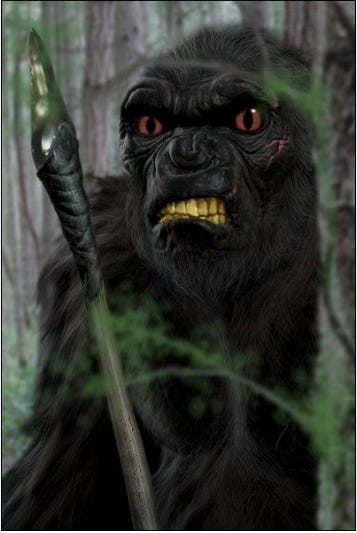
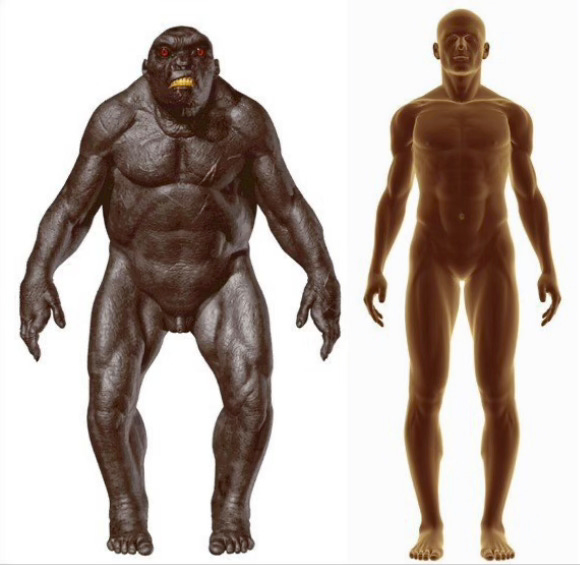
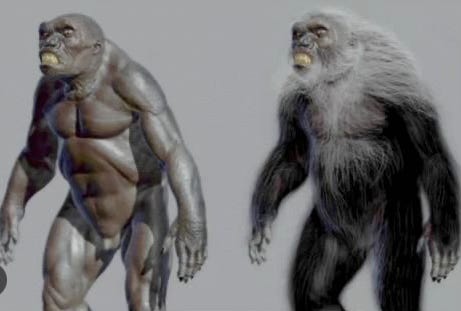
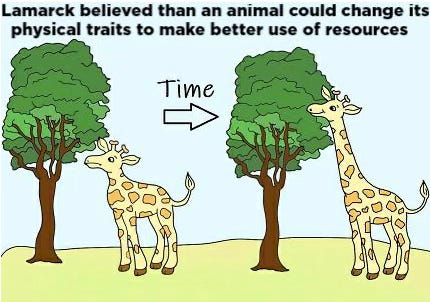
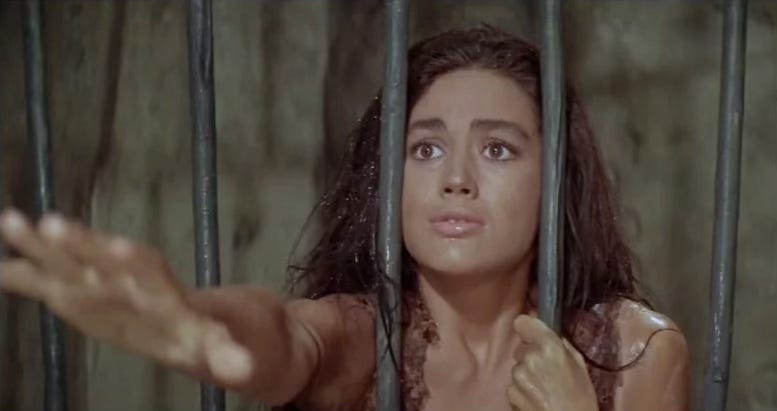
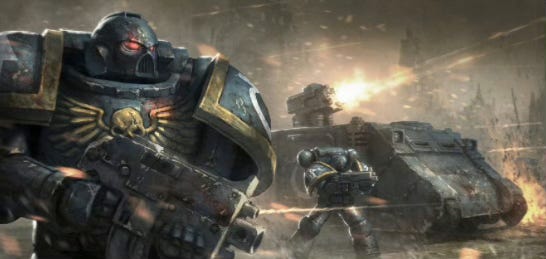
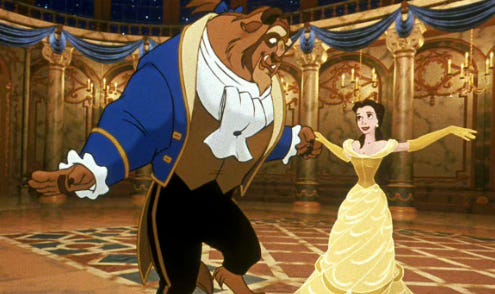
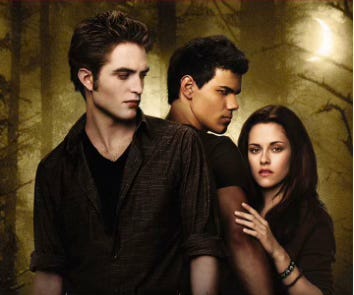
Nice review! I loved that book when I first read it back in 2018... may be up for a reread soon. My own assessment of its scientific validity is "half-true". There WERE ape-men running around while anatomically modern humans were evolving (H. erectus, H. naledi, late-surviving australopithecines like Paranthropus, etc.), and they certainly contributed to our lingering genetic fear and disgust of things that look like them. Neanderthals specifically probably didn't look like that, but they did likely eat humans, since they were mostly carnivorous, and they were certainly fantastic at war, since it took so long for humans to defeat them.
That said, the idea of Neanderthals themselves being responsible for so much of human-specific behavior and physiology is simply false; otherwise modern sub-Saharan Africans, who have no Neanderthal DNA, would have visible estrous cycles and would lack many of the other sapiens-specific adaptations Vendramini attributed to Neanderthal predation. Neanderthals themselves also PROBABLY didn't look like that, even if other prehistoric hominids did. Still, a really, reaaaally cool theory which has been a big inspiration to my own writing.
Now do Unseen Realm 😎